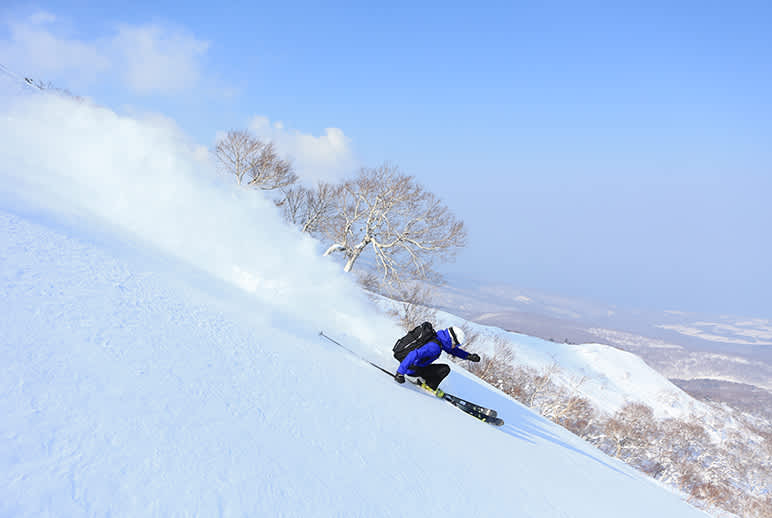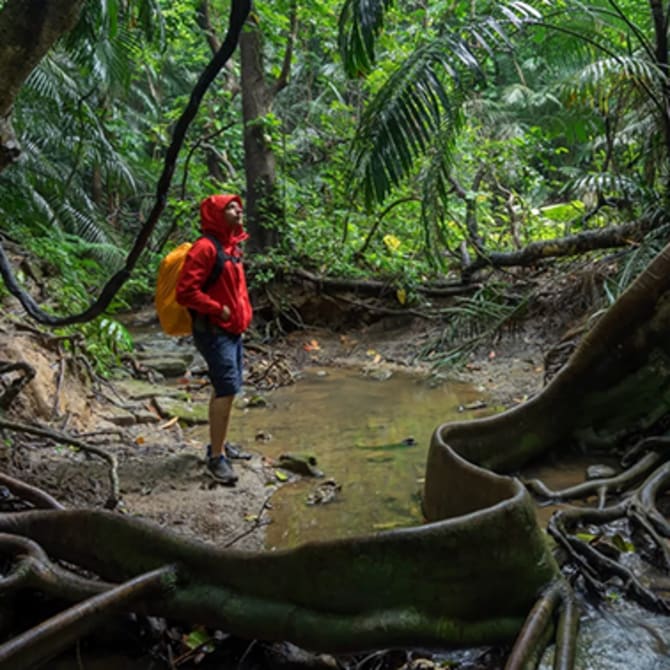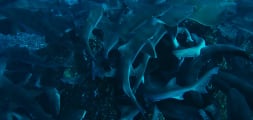Backcountry

Off the beaten piste — what is backcountry skiing and snowboarding?
Backcountry skiing and snowboarding refers to riding outside the boundaries of patrolled ski areas. Backcountry adventures allow experienced skiers and snowboarders the chance to get away from the crowds to enjoy fresh powder snow and beautiful, quiet scenery.
Japan's unique climate, topography and location make snowfall in the mountains consistent and highly sought after by those in the know. The snow has a low moisture content causing it to be particularly dry and fluffy. Backcountry enthusiasts all over the world call the country's deep, light powder snow "Japow."
Some Japanese ski resorts allow visitors to go off-trail at their own risk, and enjoy Japow while skiing and snowboarding through the trees. Snow travelers looking for a more intensive backcountry experience hike and snowshoe to find deep, untouched powder. Backcountry skiing and snowboarding requires specific skills, equipment, and safety knowledge.
The risks in the backcountry are real and should not be taken lightly — some of the dangers include avalanches and tree wells. First-timers should join a backcountry ski tour with experienced guides who will provide all the necessary know-how for a fun, safe day in the mountains.
Backcountry: Skills And Equipment

Be prepared — skills and equipment for a backcountry ski trip
Backcountry adventures require specific skills and equipment, as well as high proficiency at skiing or snowboarding. Because backcountry skiing takes place in natural terrain, you need to be aware of potential natural hazards including avalanches.
Skilled guides are certified in avalanche prevention and awareness, and know the areas in which they work. Those who choose to go without a guide should take an avalanche awareness class, have backcountry experience and be up-to-date on current avalanche reports.
Climbing steep, snowclad mountains can be strenuous work so backcountry beginners may want to learn in areas that offer mechanized transport for an easier approach. For example, Niseko Iwanai and Shizukuishi use snowcats while Rusutsu uses a helicopter.
All backcountry skiers and snowboarders should carry a location beacon, shovel, extra clothes, GPS, extra food, water, and a first aid kit. Skiers heading up the mountain on two legs should use touring bindings (to walk up the grade with skis on) and climbing skins to stick to the bases. Snowboarders can use a splitboard setup or snowshoes, poles and a backpack for their board. Many tour companies and ski areas rent this specialized equipment.
Backcountry By Area

Regional variations — backcountry skiing by area
Backcountry skiing is a draw around Japan, with each region offering its own qualities. The Niseko area of Hokkaido is known as a paradise for backcountry skiing and snowboarding. Plenty of snow falls in Niseko from December until May, and the many tour companies located there can customize excursions.
Hakkoda and Hachimantai are the most visited mountains in Tohoku for backcountry adventures. Hakkoda's icicle-covered summit can be reached by gondola for exploration of a variety of backcountry terrain. Hachimantai is famous for dry powder, and snowcat tours are available to explore the backcountry.
In Nagano's Northern Alps, Hakuba, Nozawa Onsen, and Shiga Kogen are spots for backcountry enthusiasts. Kagura, in Niigata, offers spring helicopter tours to explore the best of late-season conditions. Western Japan is known for having big mountains; however, snowfall is less consistent, so backcountry riders need to be aware of snow conditions before embarking on their snow adventure.





























































